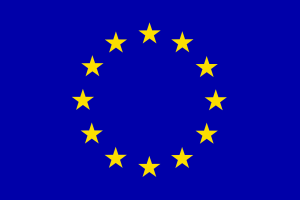The concept of open innovation is not new. It has existed for decades and has won many advocates on its side. The European Union Commission was among the first to embrace the benefits of connecting businesses and science through sustainable funding.
To succeed in its endeavours, the Commission had to recognize the EU’s own weaknesses and address them on the community, national, and local levels. To do so, it created a sound, multi-layered strategy based on three main pillars.
In Part I of this article, we discussed the first two pillars. Let us remind ourselves what they are in the brief overview below.
Creating a Better, More Viable Open Innovations Network: Pillars 1 and 2
The first two pillars include reforming the legislative framework and increasing private investment in research and innovation. The reasons the EU Commission focused its efforts on these two areas were largely rooted in the fact that the EU has a heavy bureaucratic apparatus with many procedures.
That meant the existing legislation could often prevent companies from introducing and carrying out innovative projects. On top of that, the regulation mostly prevented big private investments. As if this was not enough, the return on those investments was insignificant compared to that in other places outside the EU.
Fortunately, the EU Commission was shrewd enough to foresee the long-term negative impact on the development of the Open Innovations Network. That is why it introduced Pillars 1 and 2 and equipped them with the following tools and mechanisms:
- Pillar 1: Reforming the Regulatory Environment:
- The Scientific Advice Mechanism
- InnovRefit
- Innovation Deals
- Horizon 2020 Policy Support Facility
- Pillar 2: Boosting Private Investment in Research and Innovation
- The European Venture Capital Fund of Funds
- The European Fund for Strategic Investments (EFSI)
Pillar 3: Maximizing Impacts
The third pillar of the EU Commission’s strategy to evolve the Open Innovations Network focuses on maximizing the impact of the synergy between innovative projects, the acting EU policies, and the available public funding sources. The ultimate goal is to allow innovative businesses to access public funding more easily and in greater amounts. So, how would that be possible?
The Seal of Excellence
The Seal of Excellence is a wonderful initiative created in 2015. It aims to give chance to all innovation projects that fulfilled the entire set of Horizon 2020 selection and award criteria but could not receive funding within the available budget.
The ultimate goal of the Seal of Excellence is to identify highly promising initiatives and help them get funding from alternative sources. The latter includes a wide variety of organizations on different levels – local, national, regional, community, and international.
This tool gives a fair chance to many stellar projects that could not receive investment within Horizon 2020. It is common knowledge that Horizon 2020 is a very competitive program. Each year, thousands of brilliant proposals contend to receive funding. Unfortunately, the budget is limited. That is why many high-potential innovative ideas remain left out.
However, the Seal of Excellence creates many advantages for both applicants and funders. On one hand, projects benefit from accessing a wider pool of potential funders. On the other, funding organizations make use of the Horizon 2020 evaluation results. It is well known that the Horizon 2020 assessment criteria and procedures are very rigorous and meticulous. Here is a Seal of Excellence start-up pitch on innovative ideas:
The European Innovation Council

Another major tool of Pillar 3: Maximizing Impacts is the European Innovation Council. The structure’s name is pretty suggestive of its purpose. The reason for its existence is also obvious. While Europe has amazing scientific knowledge, it has been lagging behind the US and China in terms of innovations for decades already.
Such a drawback is especially evident in the area of scaling disruptive businesses and innovative ideas. Part of it is due to the significantly lower speed of responsiveness of EU institutions. Innovative ideas need to be timely addressed to scale and evolve.
The EU has recognized this weakness and has taken numerous steps to create a friendlier, timelier, and more flexible innovation framework. One of the most significant mechanisms in this regard is the establishment of the European Innovation Council (EIC).
The EIC’s goal is to connect scientific research, innovators, and funders to create real-life products and services. It will also develop the entrepreneurship environment on the community level.
Merging the digital and physical aspects
To conclude our account on Pillar 3 of the EU Commission’s strategy to advance the Open Innovations Network, let us recap the biggest challenge the EU faces in this area. It is bridging the gap between the digital and the physical sides of businesses.
Digitalization is still underrated in some of the member states, thus impeding innovation and slowing important societal and economic changes. The goal of the Open Innovations Network is to unite science, technology, and the human, physical aspects of businesses.
Such an accomplishment will be possible if the EU promotes digitalization in its various forms. Exploring Big Data and the Internet of Things is only a small part of such a long process. The EU’s main four priorities for digitalization include food, water, energy, and health. Becoming economically competitive and creating more jobs will be only a few of the natural consequences of evolving the Open Innovations Network for the generations to come. Thankfully, the EU Commission has taken decisive steps to support this process.

